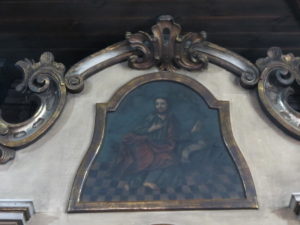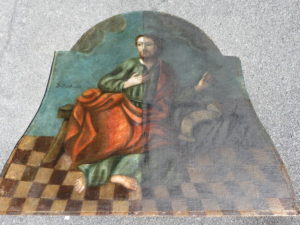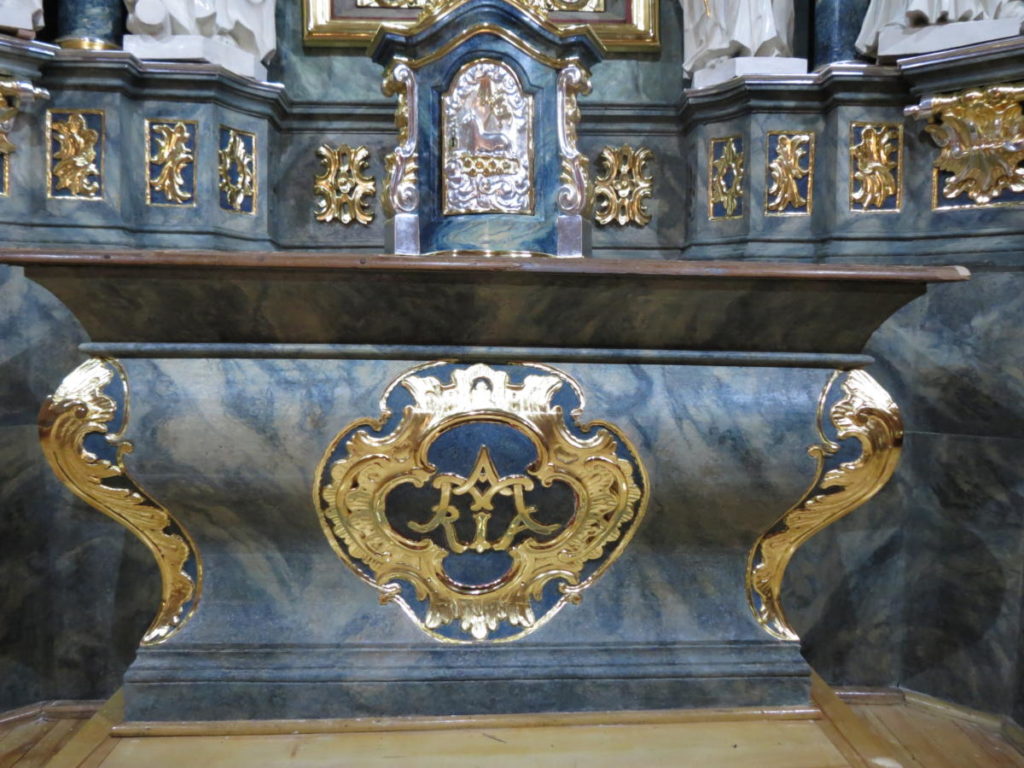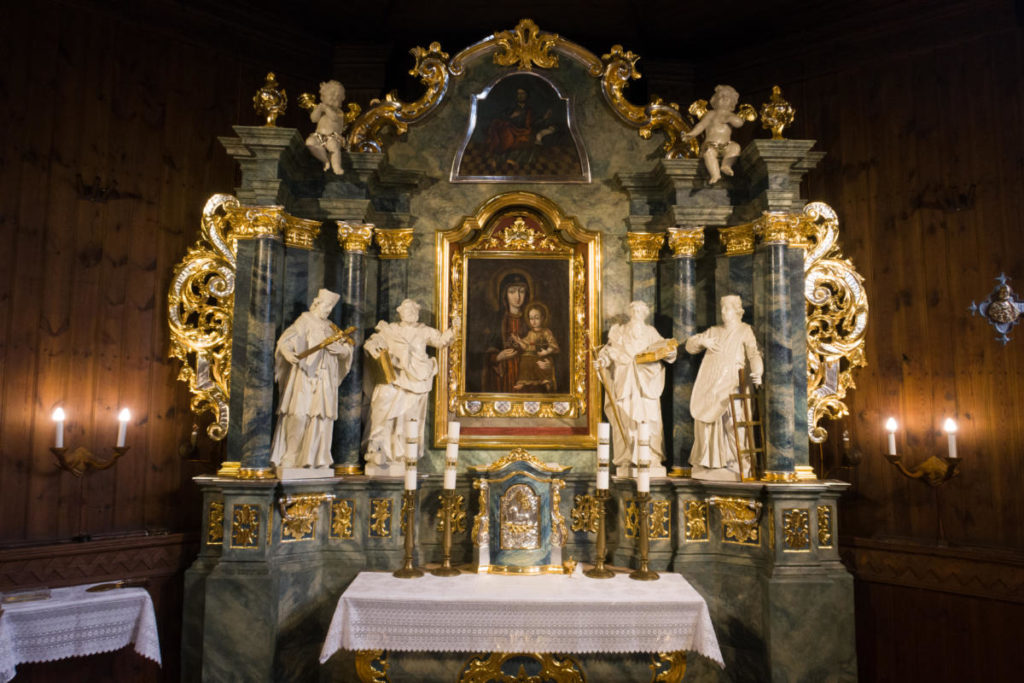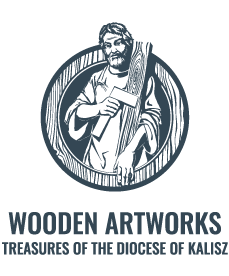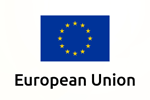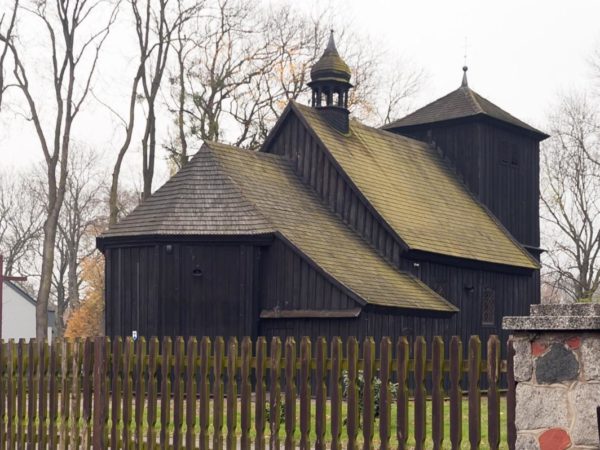
Church of St. Mathew the Apostle in Górzno
RENOVATION OF THE MAIN ALTAR OF ST. MATTHEW IN GÓRZNO
The main altar from the church of St. Matthew in Górzno was made in the middle of the 18th century in the late-baroque aesthetics with a rococo decoration.
The general condition of the altar was bad, especially due to plastic transformations which it had undergone during last repairs, and also due to physical, chemical and biological processes. Signs of woodboring beetles were detected, and wood of some wood-carved elements was degraded. The altar had been repainted with an oil paint in gray cream, and light brown colours.
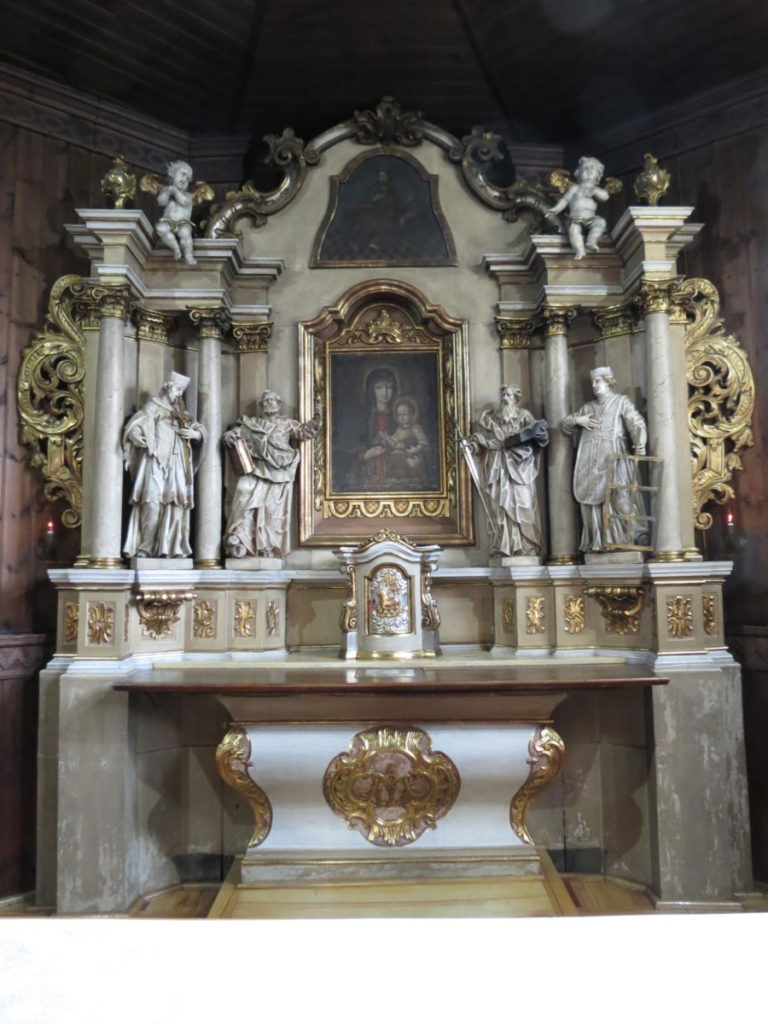
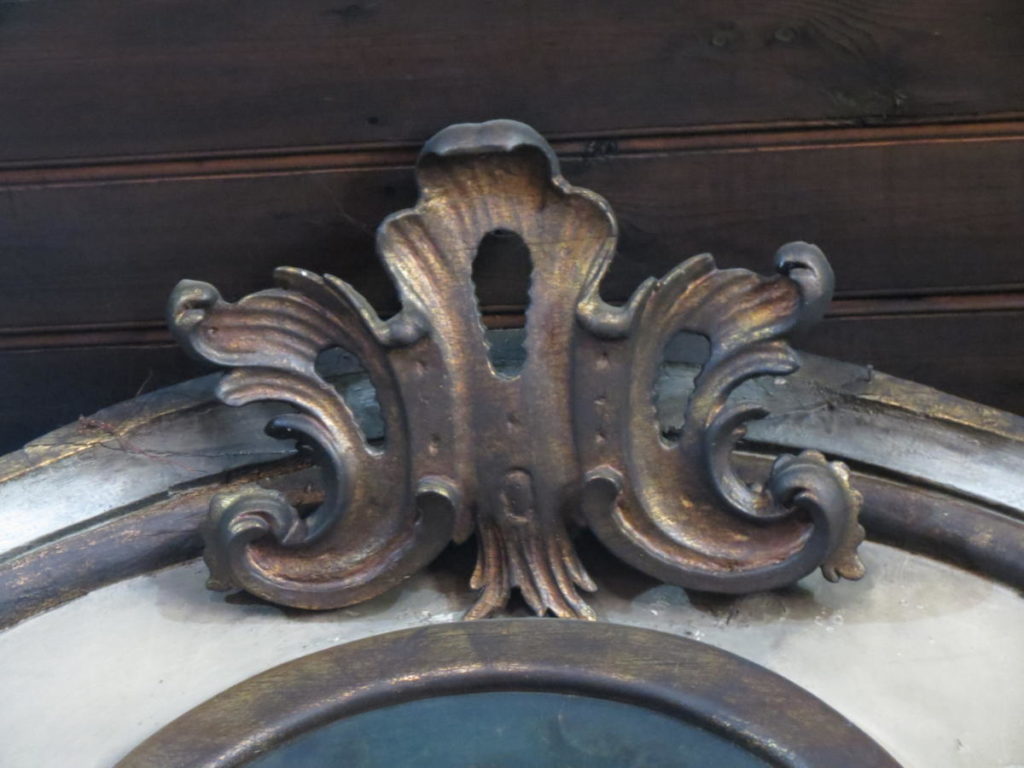
Also the figures which had been originally made in the chipolin technique with gilding, had been repainted white. Thick monochromatic layers were visibly stratified, and the unoriginal gilding was made with schlagmetal and bronze which affected the aesthetic reception of the altar badly. Many signs of mechanical damage and clear cracks and plank gaping were seen. The paintings were very dirty, and the applied retouch had darkened.
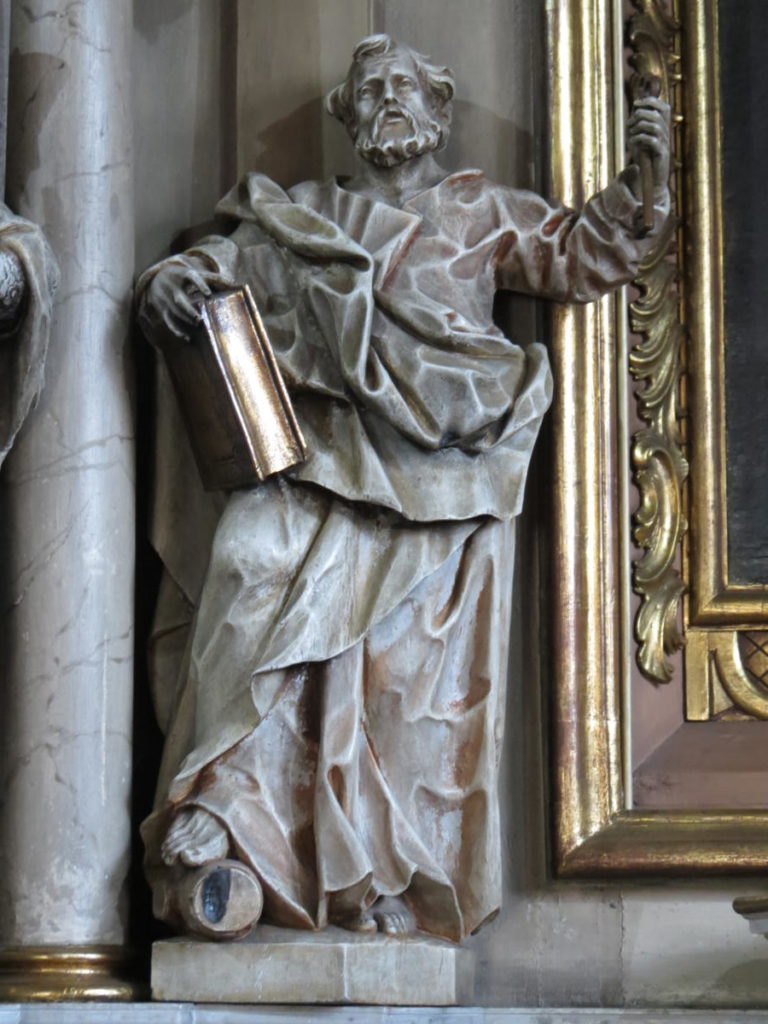
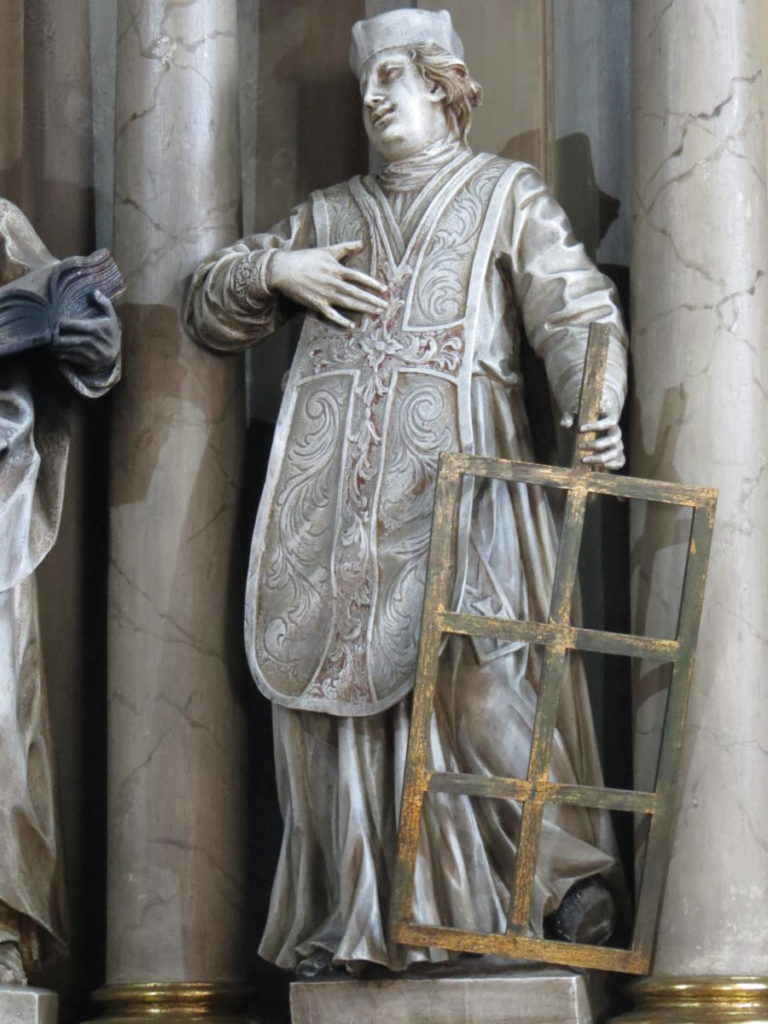
The direct reason for commencing the works was an active process of the object’s deterioration. The main aim of renovation was to prevent the further damage to the object, ablation of unoriginal repainting and metallization which distorted the aesthetic reception of the altar.
Before the renovation started, photographic and descriptive documentation of the object’s condition was completed. After test uncoverings which allowed to identify the technological construction, mobile elements of the altar were disassembled. When the preliminary cleaning was completed, sterilization of the object started with the use of an insecticide and the impregnation of wood with acrylic resin solution by a means of topical application.
Next, the works involved the cleaning of the paint layer with the use of solvents. Oil and emulsion repainting, as well as most part of old chalk-adhesive putties were ablated. Small losses of wood were filled with resin, and losses of paint were filled with emulsion putties. Then the original colours of the altar were recreated.
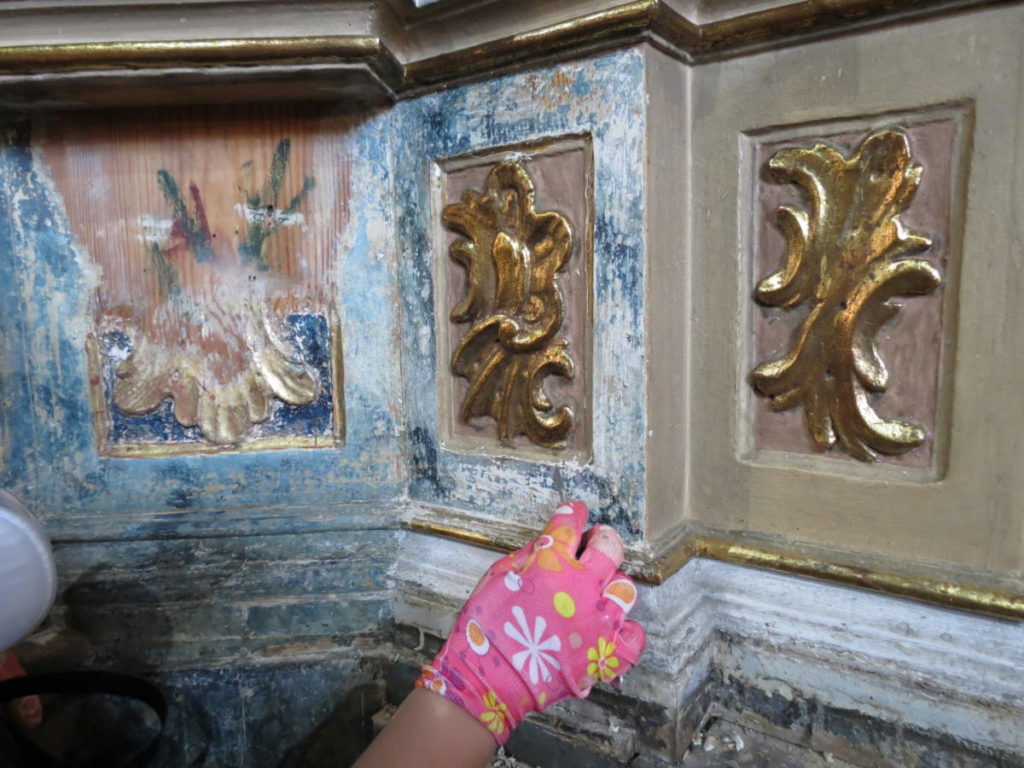
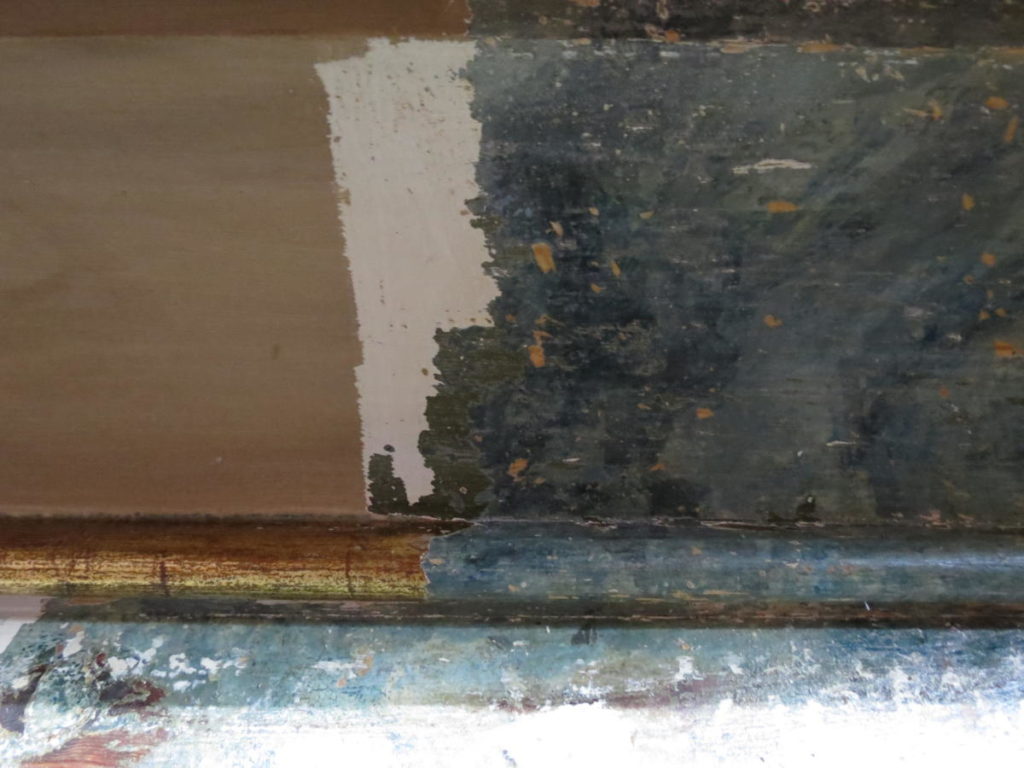
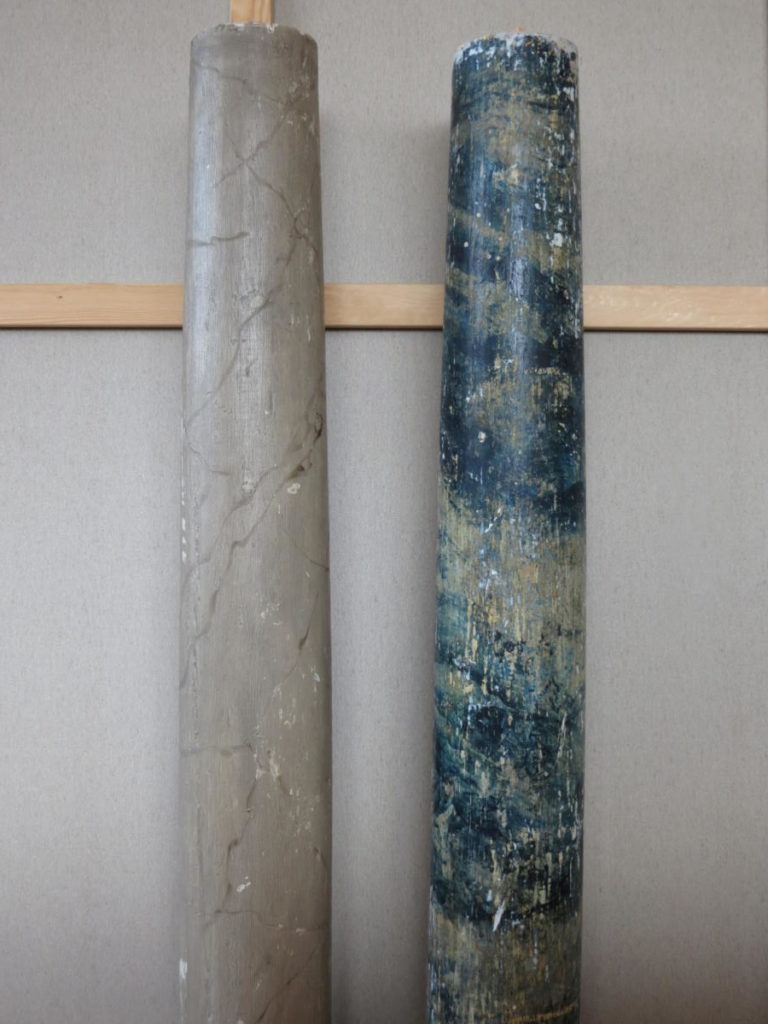
Disassembled elements of the altar were secured and transported to a workshop. The elements were sterilized with insecticides, and next wood was impregnated with an acrylic resin solution. Then the cracks and base damages were adhered. Some of the woodcarved elements required filling of wood, bigger losses were filled with plugs, and smaller losses and reconstructions with resin. From both woodcarved elements and statues the unoriginal gilding was removed with the use of the solvent solution, the losses of primer was filled with chalk-adhesive mortar and the gilding was reconstructed in bole technique with the use of gold and silver leaf. Silvering was protected with shellac.
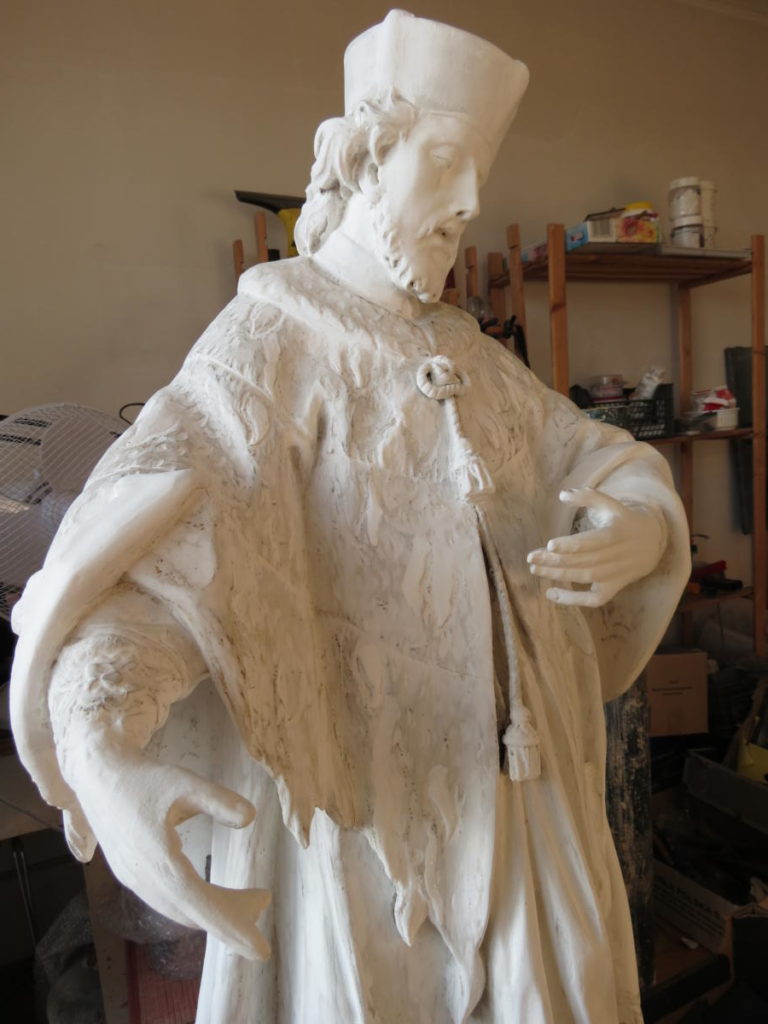
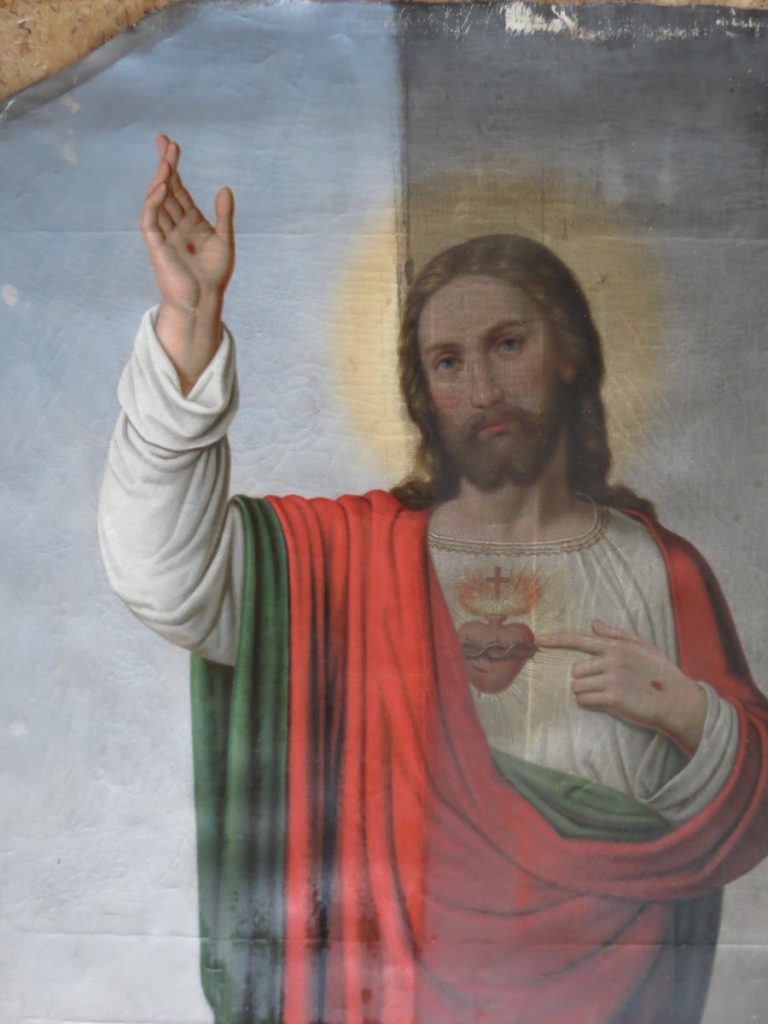
The paintings were cleaned from the reverse and from the front with solution of solvents. Old putties and retouch were removed. Local repairs were done and the canvas was straightened with the use moist stripes of paper glued to the sides. The painting canvas was attached to the original stretcher. Emulsion putty was applied where the losses occurred and stippled with oil paints with drained adhesive. These were secured with neutral dammar varnish.
Eventually all mobile elements were reassembled, photographic, descriptive and renovation documentation was made.
